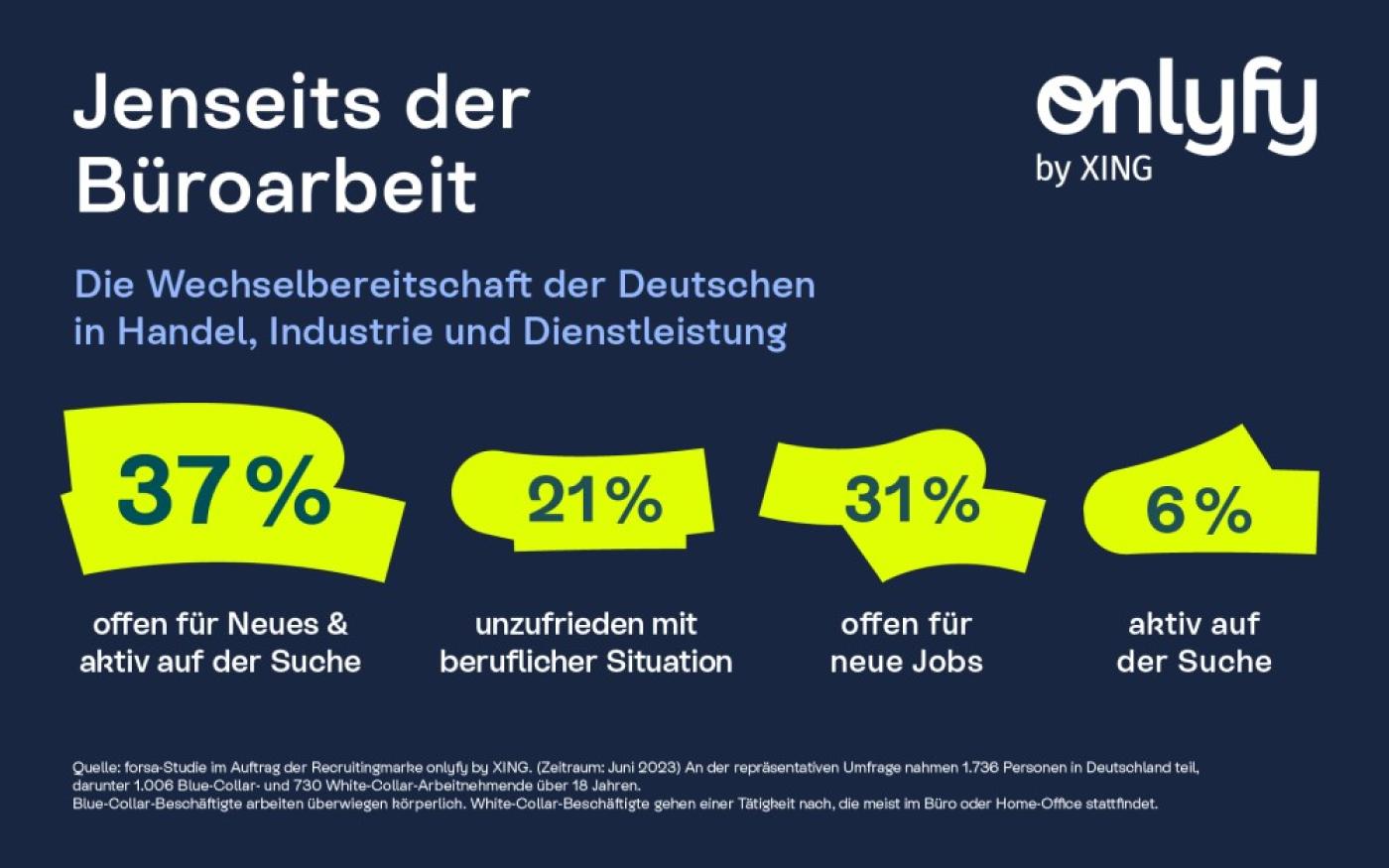"The competition for workers who do not work in office jobs is tougher than ever. We are talking about a clearly perceptible shortage of workers and independent of economic fluctuations," said Frank Hassler, Board Member of Xing's subsidiary New Work SE. Non-office jobs are difficult to fill, the survey found. Employers cite too few workers on the market (83 per cent), too few professional qualifications (62 per cent) and too high salary expectations (55 per cent). Recruiting skilled workers is particularly difficult in the service sector (95 per cent), industry (94 per cent) and (88 per cent). Every second company surveyed said it takes three to six months to fill a vacancy.
More and more blue-collar jobs remain vacant, a survey conducted by Onlyfy on behalf of the Xing career network and published on Thursday (September 7, 2023) has found . Around 90 per cent of companies in industry, crafts, trade and services lack skilled labour and are unable to fill vacancies. Nearly four out of ten respondents in the blue-collar sector are open to changing jobs due mainly to a high workload and low salaries. More than 1,000 blue-collar employees, 730 white-collar employees (office workers) and 200 HR managers were interviewed online for the survey.
Too few workers, lack of qualifications and high salary demands
Every fifth respondent unsatisfied with job
"Companies in the skilled trades sector, the hotel industry or retail need new approaches to recruiting and should pay more attention to job seekers' needs to survive in the long term," Hassler warned. One in five respondents with a manual job is unsatisfied. Thus, 37 per cent of respondents are looking for a new job (6 per cent) or at least thinking about a change (31 per cent). Respondents in Generation Z (18 to 29 years) are particularly willing to change jobs (59 per cent). In addition to a high workload (45 per cent) and a too low salary (39 per cent), the employees surveyed also criticized employee behaviour (35 per cent) and managers (34 per cent) as well as inflexible working hours (21 per cent). However, the present employer offers job security (74 per cent), a cohesive workforce (59 per cent) and an attractive location (54 per cent).

Blue-collar workers - 80 per cent of German labour market
"The debate about a shortage of skilled workers focuses too frequently on the needs of knowledge workers. We have to cater to the needs of people who keep things running in this country," Hassler pointed out. Blue-collar employees account for 80 per cent of workers on the German labour market. Most seek job security (74 per cent), a higher salary (71 per cent), an attractive location, punctual payment (69 per cent) and good leadership (64 per cent) in a new job. A meaningful job (55 per cent) and flexible working hours (48 per cent) were also cited as important job criteria. The latter includes flexitime or a four-day week for 66 per cent of respondents.
nj/mm/pb
Sources and further information
More
Similar articles

One in two people giving up job early, Xing survey reveals

Lack of skilled workers remains urgent, says Chamber of Commerce

Generation Z most likely to change jobs, Xing survey finds
